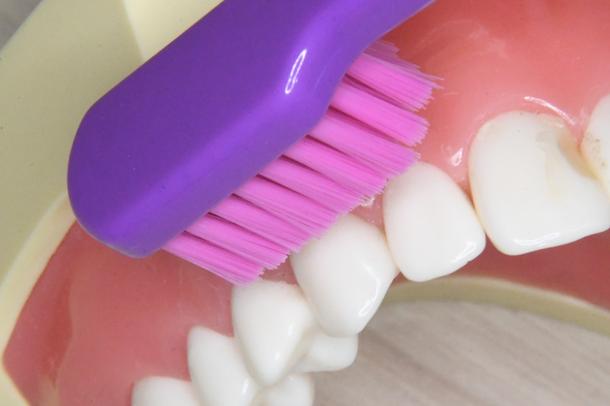First aid in corona misfortune, what to do with "artificial respiration"? [Pedestrian doctor by Rumiko Iwasada]
Accidents happen in cars. The survival rate (as well as the aftereffects) changes greatly depending on how the bystanders (the people who are close to them) respond to the injured or sick in front of them. It is now included in the curriculum for obtaining a driver's license.
However, now in the corona, even people who walk outside wear masks, and while non-woven fabric masks are recommended as a countermeasure against aerosols (air in which viruses etc. are floating), artificial respiration is necessary to help someone. can't you? "How should first aid be provided?"
In the midst of this, the Cardiopulmonary Resuscitation Law Committee of the Japan Emergency Medical Foundation was creating a guideline on emergency resuscitation methods by citizens based on the epidemic of the new coronavirus infection (guidelines). This is also used in the Tokyo Fire Department's first aid course, so I would like to share it with our readers.
Possibility that the patient is infected with Corona
Let's review the basics of the flow of first aid.
(1) Found a fallen person
(2) Confirm the safety of your surroundings so that you do not get involved in other accidents.
(3) Tap both shoulders and call out "Do you understand?"
(4) If there is no reaction, ask for help from the people around you and ask them to ``call 119'' or ``bring an AED''. feel that someone will do it, and no one will do it)
(5) Check if the patient is breathing while watching the movement of the chest
(6) If you are not breathing normally, repeat the set of 30 chest compressions and 2 artificial respirations.
(7) When the AED arrives, turn it on, attach the pad, and act according to the message from the AED (details omitted)

(8) Repeat the above (6) and (7) until the ambulance responds or the patient responds.
So, how will this change in the current situation of Corona? The basic idea is to treat all the sick and injured people in front of you as if they might be infected with the corona virus. In that case, what you want to be careful about is (3) when you bring your face close to the patient's face to check their consciousness. (5) Make sure you are breathing normally. (6) When performing artificial respiration. That's the part. And of course, if it is indoors, ventilation will be necessary.
In the confirmation of consciousness in (3), I learned to put my ear close to the mouth of the patient and listen carefully to even small voices. However, it is not good to put faces together under the corona guidelines. The helper should stay upright and keep his/her face away from the injured person's face as much as possible.
And ventilation where you are. In (4), in addition to "call 119" and "carry an AED", you can also say "Please open the window and ventilate" (indoors only).
How to perform artificial respiration
The breathing check in (5) is also done by the helper observing the movement of the patient's chest without bringing his/her face closer. (6) How to perform artificial respiration.
Mouth-to-mouth artificial respiration is supposed to use a mouth sheet to prevent infection, but I still want to avoid creating a situation where the air exhaled from the mouth is directly exposed. The guidelines state that unconscious adults should not be given artificial respiration, but should be given chest compressions and electric shocks using an AED.
If I don't give artificial respiration, won't I run out of oxygen? It's easy to think that, but the blood in the body contains enough oxygen, and it's been proven that just moving the heart with chest compressions is effective for a considerable amount of time.
When I was a high school student, I took a course from the Japanese Red Cross Society, and I learned that artificial respiration and chest compression should always be combined. ing. Artificial respiration cannot be performed if the mouth is broken in a traffic accident or if the throat is blocked by vomiting, but even in such cases, chest compressions are actively performed.
That chest compression. When the chest is pressed, the air in the lungs is forced out of the victim's mouth. The guidelines state that a handkerchief or towel should be placed over the patient's mouth and nose before performing chest compressions to avoid exposure to aerosols.
The rest is business as usual. In any case, keep doing chest compressions “until you sink about 5 cm” “at a rate of 100 to 120 per minute” “constantly”. Then, use the AED and do your best until you "get a response" or "hand over to the ambulance crew."
Those who hold the fate of the person in front of them
On the other hand, they have a slightly different way of thinking about children. Cardiac arrest in children often involves suffocation and drowning, and the need for artificial respiration is often high. Therefore, if you have the skills and are willing to do so, artificial respiration will also be performed.
In addition, depending on the AED, pads for children are included, but this "children" is "up to about 6 years old". For elementary school students, child fares are applied on trains, but remember that AEDs for adults must be used to be effective. For more than 10 years, it has been said that this confusing notation should be changed, but it is a pity that the response has been delayed.
As I wrote in this column before, the arrival time of the ambulance was delayed this summer when the spread of corona infection was the worst. During that time, it is the people by your side who hold the fate of the person in front of you. For those of you who say, "I did it a long time ago, but I've already forgotten," I hope you'll review the steps again and be prepared in case you need to.
Rumiko Iwasada|Motor Journalist/Author
Having experience living in Italy, he actively speaks to the government from a global user perspective. In her response, she writes the impressions that she speaks honestly about female users, and she is serializing the column "Rumiko Iwasada Rumiko's Pedestrian Doctor". The latest publication is "The World's Most Kind Robot" (Kodansha).

![[Latest in 2022] Explanation of how to register DAZN for docomo with images | 31 days 0 yen free trial reception until April 17](https://website-google-hk.oss-cn-hongkong.aliyuncs.com/drawing/article_results_9/2022/3/28/22149d541c51442b38a818ab134a8cf0_0.jpeg)
!["Amaho no Sakuna Hime" celebrates its first anniversary. The Ministry of Agriculture, Forestry and Fisheries moved to allow you to experience rice farming in a depth unparalleled in the history of games.A rice farming action RPG with over 1 million units shipped worldwide [What day is it today? ]](https://website-google-hk.oss-cn-hongkong.aliyuncs.com/drawing/article_results_9/2022/3/28/378f9ee978fe8784d8ab439d041eee85_0.jpeg)




